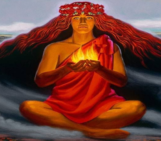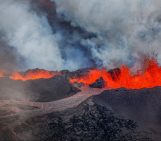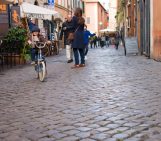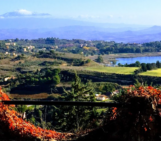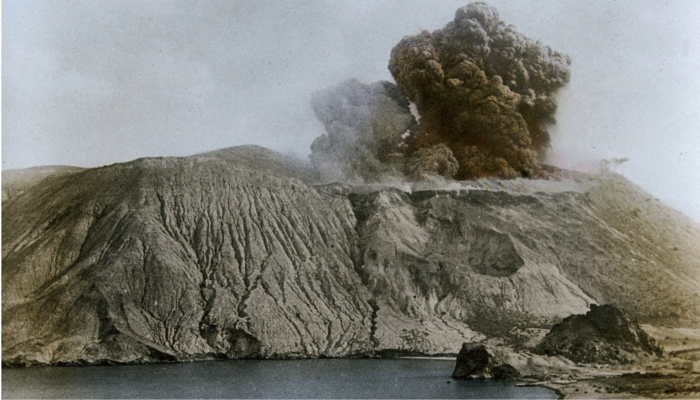
Why is a fork actually called fork? And why are volcanoes actually called volcanoes? While I do not have any reply for the first question, I have one for the second… and with a quite interesting story.
The Earth currently has around 1350 potentially active volcanoes, aside from the volcanoes along the spreading centres (USGS faq); all of them are named after a single volcano, called Vulcano.
Vulcano
Vulcano is an island of the Aeolian archipelago, located in the Mediterranean Sea, offshore the northern coast of Sicily (Fig. 1a, b). The archipelago comprises a volcanic system of seven emerged island and further submerged seamounts. The Aeolian Islands are part of the UNESCO as a World Heritage Site since they “provide outstanding record of volcanic island-building and destruction, and ongoing volcanic phenomena” (UNESCO).
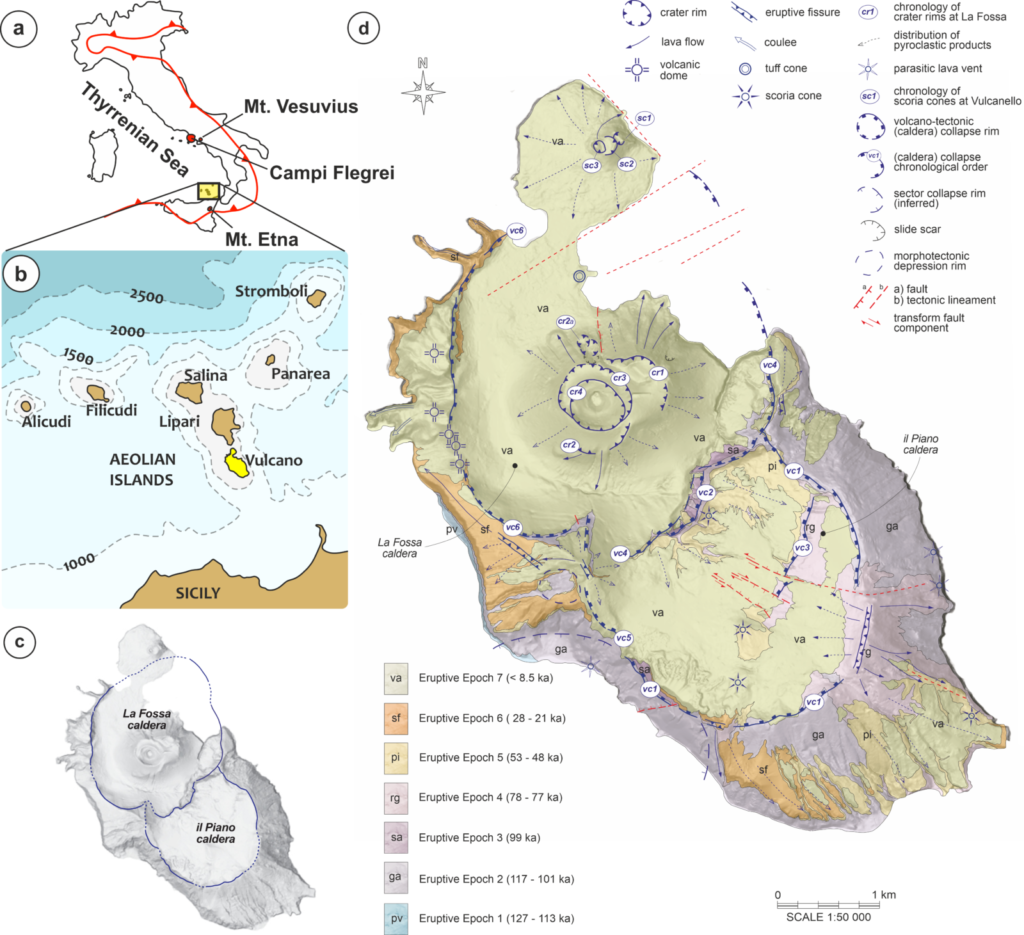
a) structural scheme of Italy showing the main subduction trend; b) zoom on the emerged Aeolian Islands with the bathymetry (modified after Casalbore et al., 2018); c) DEM of Vulcano Island (from De Astis et al., 2013); d) geological map (modified after De Astis et al., 2013 and Casalbore et al., 2018).
The geochemical affinities of the Aeolian islands and the presence of deep seismicity (Milano et al., 1994), suggest that the islands can be considered a volcanic arc related to the active subduction of the African Plate below the Eurasian Plate (e.g., Mantovani et al., 1996) (Fig. 1a).
Vulcano has a surface of 21.2 km2, rises up to 499 m a.s.l., and represents only the exposed summit (10%) of a larger volcanic edifice whose diameter at the base, located ca. 1000 m b.s.l., is about 15 km (Casalbore et al., 2018). The volcanic complex, now quiescent, comprises two main calderas, La Fossa and Il Piano (Fig. 1c). The volcanological evolution of the island is the results of eight eruptive epochs (EE), since ca. 130 ka (De Astis et al., 2013; Casalbore et al., 2018; Fig. 1c). The emerged initial volcanic edifice was a stratovolcano constructed from the eruptions during EE2 (117 – 101 ka), followed by a main collapse which formed the Il Piano Caldera (∼ 100 ka). During EE 8 (< 8.5 Ka) La Fossa Cone growth within La Fossa Caldera, along with the Vulcanello lava platform in the north (Fig. 1d). Currently, the volcanic activity is recorded mainly around La Fossa Cone (De Astis et al., 2013; Casalbore et al., 2018), whose plumbing system is controlled by NW-SE and N-S striking faults (Chiarabba et al., 2004).
The reasons of the Vulcano Island activity are now well-known, but going back thousands of years, people living in the area would tell a different story. The myth of a God crafting weapons and jewellery, using Vulcano as his workshop, his name was Hephaestus for the Greeks and Vulcan for the Romans afterwards.
Hephaestus (Vulcan), God of Fire, Volcanoes and Metalworking
We are used to think about Greek and Romans gods as huge mountain of muscles and/or of extreme beauty. Although this could be true, there is one God who is ugly and lame; his name is Hephaestus (Fig. 2).
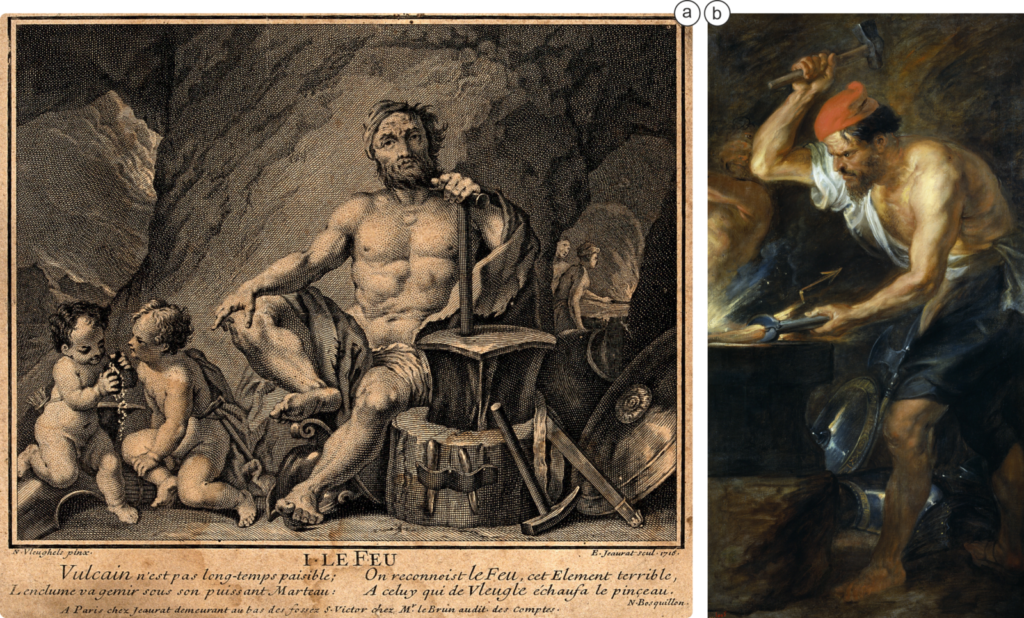
a) Hephaestus in his forge. Engraving by E. Jeaurat in 1716, after N. Vleughel (from Fae, via Wikimedia Commons); b) Vulcano forjando los rayos de Júpiter, by Peter Paul Rubens in 1636, Museo del Prado (Madrid, Spain).
Son of Zeus and Hera, the King, and Queen of the Gods respectively, he was thrown off Mt. Olympus by his mother, suddenly after his birth, because he was ugly and jewellish. Hera could not allow herself to be the mother of a monstrosity and to be subjected to the goading of the other gods. Hephaestus landed on Lemnos Island, breaking one of his legs and becoming a cripple, where Thetis (a sea nymph and mother of Achilles) found and adopted him. During his following childhood, Hephaestus spent his time in sea caves, playing with pearls and corals, crafting magnificent jewellery, which he donated to Thetis. Despite his unfortunate beginning, he grew up kind-hearted, although his grief for his true mother’s actions persisted and lead him to become frustrated with feelings of revenge. One day, Hera celebrated her name day on Mt. Olympus and Hephaestus gifted her with a shiny golden throne. Such marvellous and unexpected gift impressed her and she sat proudly on it. However, while trying to stand up, she found it impossible; Hephaestus had placed invisible chains on the chair to imprison his mother. All the gods were shocked and angered while Hera begged her son’s forgiveness with tears. Ares, the God of War and also Hera’s son, tried to convince his brother but only Dionysus, Hephaestus’s great friend, convinced him to find an agreement with Zeus. In exchange for Hera’s freedom, Hephaestus would marry Aphrodite, the Goddess of Love and the most beautiful of the Gods, along with a place on Mt. Olympus (Fig. 3a), where he built his forge.
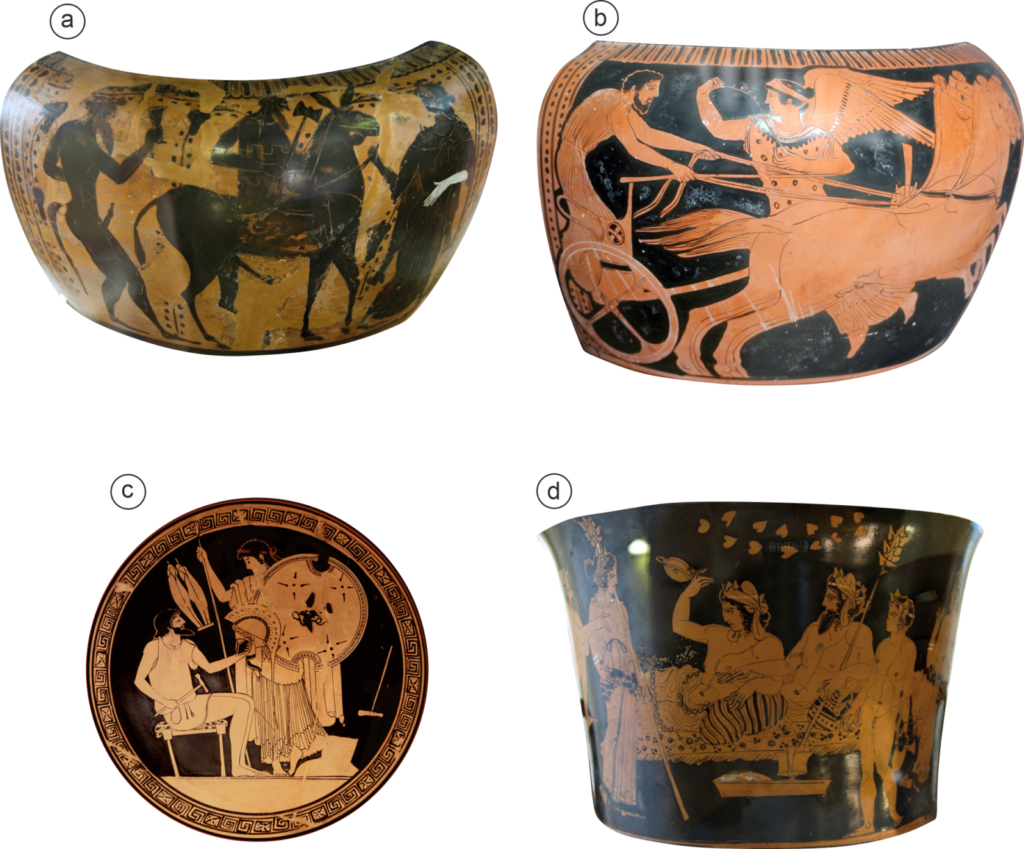
a) The return of Hephaestus to Olympos. Archaeological Museum of Agrigento, C 1535 (from Zde, via Wikimedia Commons); b) Hephaestus gives the golden chariot to Helios, Museo provinciale Sigismondo Castromediano (from Sailko, via Wikimedia Commons); c) Hephaestus presents Achilles’ new armor to Thetis, 490-480 BCE; d) Symposium scene with bearded Dionysos and Hephaistos, a maenad and satyr, 420-400 BC. Archaeological Museum of Agrigento, R 167.
There, Hephaestus created two huge golden statues to serve him, and crafted all the majestic buildings of Olympus, regularly giving priceless gifts to the gods. He donated the thunderbolts to Zeus, the weapons to Achilles upon the request of Thetis (Fig. 3c), the shining chariot to Helios (Fig. 3b), the golden cup to Dionysus (Fig. 3d), and the arrows to Apollo (Ovid, Metamorphoses).
The figure of Hephaestus is also often associated with the Lemnos Island, a volcanic island in the Aegean Sea, where several myths located his true forge. After the arrival of the Greeks in Sicily on the 8th century B.C., his forge moved also to Mt. Etna (after the nymph Aetna, another story for another post) and to Thérmessa Island (“source of heat”). Only with the arrival of the Romans, who took the Greek mythology and culture, the name Hephaestus was changed in Vulcan, and Thérmessa Island became Vulcano Island. In addition to his theological meaning, Vulcano Island was important to Romans because it provided wood and sulphur, found in mines, which remained active until the last eruptions of 1890.
The association of Hephaestus (Vulcan) to volcanoes lied on the belief of both the Greeks and the Romans, that volcanoes, in particular Lemnos Island, Mt. Olympus, Mt. Etna and Vulcano, were the chimney of the forge of Vulcan, who created lava fragments and clouds of hot dust, along with earthquakes while working on his crafting.
So why volcanoes are actually called volcanoes?
The use of the term “vulcan” already appeared in France on 1375, to then spread during and after the XVI century, assuming different forms such as “vulcano, mt. vulcano, volcano, mt. ignivomo, ignovomo, mt. fiammifero, vesuvio, mongibello” (Coccia, 2009). However, already during the conquest of Central America, the Spanish called “volcan” the first erupting mountain they saw and, consequently all the others, referring to Vulcano Island in Italy. Since then, the word “volcan” became a common term in the world known by Europeans, and now worldwide. Today, the myth of Hephaestus extends even beyond Earth, giving the name to the Hephaestus Fossae (Fig. 4), on the northern hemisphere of Mars (ESA).
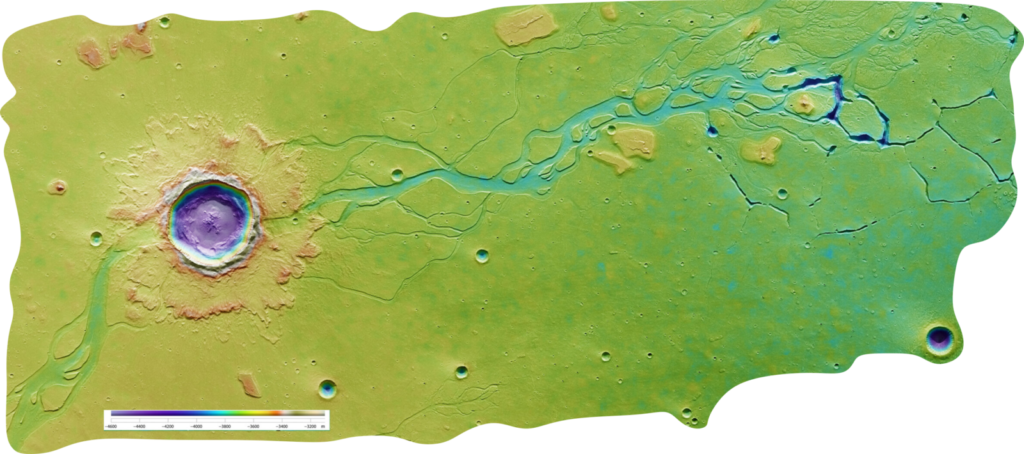
Hephaestus Fossae on the northern hemisphere of Mars. From ESA.
References
Casalbore, D., Romagnoli, C., Bosman, A., De Astis, G., Lucchi, F., Tranne, C.A., Chiocci, F.L., 2018. Multi-stage formation of La Fossa Caldera (Vulcano Island, Italy) from an integrated subaerial and submarine analysis. Marine Geophysical Research. https://doi.org/10.1007/s11001-018-9358-3
Chiarabba, C., Pino, N.A., Ventura, G., Vilardo, G., 2004. Structural features of the shallow plumbing system of Vulcano Island Italy. Bull. Volcanol. 66, 477 – 484. https://doi.org/10.1007/s00445-003-0331-9
Coccia, A., 2009. Piccolo glossario dei termini di Vulcanologia. Unpublished thesis, University of Suor Orsola Benisasca, Napoli (Italy).
De Astis, G., Lucchi, F., Dellino, P., La Volpe, L., Tranne, C.A., Frezzotti, M.L., Peccerillo, A., 2013. Geology, volcanic history, and petrology of Vulcano (central Aeolian archipelago). In Lucchi, F., Peccerillo, A., Keller, J., Tranne, C.A., Rossi, P.L. (Eds.). The Aeolian Islands Volcanoes 38. Geological Society Memoirs, London, pp. 281 – 349. https://doi.org/10.1144/M37.11
ESA Week in Images website, https://www.esa.int/Highlights/Week_In_Images_10_14_February_2014. Consulted on 07/03/2022.
Mantovani, E., Albarello, D., Tamburelli, C., Babbucci, D., 1996. Evolution of the Tyrrhenian basin and surrounding regions as a result of the Africa—Euroasia convergence. J. Geodyn. 21(1), 35 – 72. https://doi.org/10.1016/0264-3707(95)00011-9
Milano, G., Vilardo, G., Luongo, G., 1994. Continental collision and basin opening in Southern Italy: a new plate subduction in the Tyrrhenian Sea?. Tectonophysics 230, 249 – 264. https://doi.org/10.1016/0040-1951(94)90139-2
Ovid, Metamorphoses. Translated By Samuel Garth, John Dryden, et al. The Internet Classics Archive, http://classics.mit.edu/Ovid/metam.html. Consulted on 06.02.2022.
UNESCO World Heritage website, https://whc.unesco.org/en/list/908. Consulted on 06/03/2022.
USGS faq website, https://www.usgs.gov/faqs/how-many-active-volcanoes-are-there-earth. Consulted on 06/03/2022.

